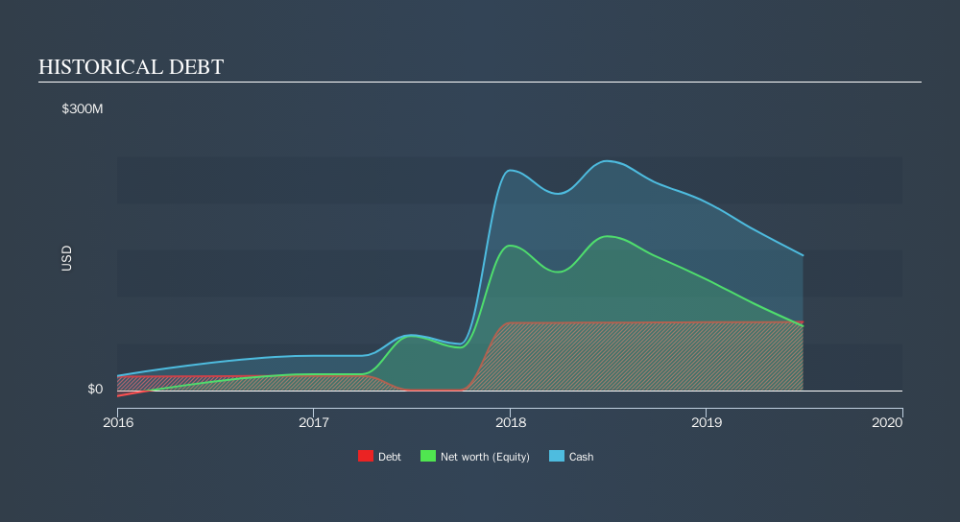Is OptiNose (NASDAQ:OPTN) Using Debt In A Risky Way?

Warren Buffett famously said, 'Volatility is far from synonymous with risk.' So it might be obvious that you need to consider debt, when you think about how risky any given stock is, because too much debt can sink a company. As with many other companies OptiNose, Inc. (NASDAQ:OPTN) makes use of debt. But the real question is whether this debt is making the company risky.
When Is Debt A Problem?
Generally speaking, debt only becomes a real problem when a company can't easily pay it off, either by raising capital or with its own cash flow. If things get really bad, the lenders can take control of the business. However, a more usual (but still expensive) situation is where a company must dilute shareholders at a cheap share price simply to get debt under control. Of course, plenty of companies use debt to fund growth, without any negative consequences. The first thing to do when considering how much debt a business uses is to look at its cash and debt together.
See our latest analysis for OptiNose
What Is OptiNose's Debt?
The chart below, which you can click on for greater detail, shows that OptiNose had US$72.9m in debt in June 2019; about the same as the year before. But it also has US$144.0m in cash to offset that, meaning it has US$71.1m net cash.
How Strong Is OptiNose's Balance Sheet?
Zooming in on the latest balance sheet data, we can see that OptiNose had liabilities of US$24.4m due within 12 months and liabilities of US$73.7m due beyond that. On the other hand, it had cash of US$144.0m and US$9.60m worth of receivables due within a year. So it can boast US$55.5m more liquid assets than total liabilities.
This surplus suggests that OptiNose is using debt in a way that is appears to be both safe and conservative. Due to its strong net asset position, it is not likely to face issues with its lenders. Simply put, the fact that OptiNose has more cash than debt is arguably a good indication that it can manage its debt safely. There's no doubt that we learn most about debt from the balance sheet. But ultimately the future profitability of the business will decide if OptiNose can strengthen its balance sheet over time. So if you're focused on the future you can check out this free report showing analyst profit forecasts.
In the last year OptiNose managed to grow its revenue by 652%, to US$16m. That's virtually the hole-in-one of revenue growth!
So How Risky Is OptiNose?
Statistically speaking companies that lose money are riskier than those that make money. And we do note that OptiNose had negative earnings before interest and tax (EBIT), over the last year. And over the same period it saw negative free cash outflow of US$103m and booked a US$108m accounting loss. But at least it has US$144m on the balance sheet to spend on growth, near-term. Importantly, OptiNose's revenue growth is hot to trot. While unprofitable companies can be risky, they can also grow hard and fast in those pre-profit years. For riskier companies like OptiNose I always like to keep an eye on whether insiders are buying or selling. So click here if you want to find out for yourself.
At the end of the day, it's often better to focus on companies that are free from net debt. You can access our special list of such companies (all with a track record of profit growth). It's free.
We aim to bring you long-term focused research analysis driven by fundamental data. Note that our analysis may not factor in the latest price-sensitive company announcements or qualitative material.
If you spot an error that warrants correction, please contact the editor at editorial-team@simplywallst.com. This article by Simply Wall St is general in nature. It does not constitute a recommendation to buy or sell any stock, and does not take account of your objectives, or your financial situation. Simply Wall St has no position in the stocks mentioned. Thank you for reading.

 Yahoo Finance
Yahoo Finance 
